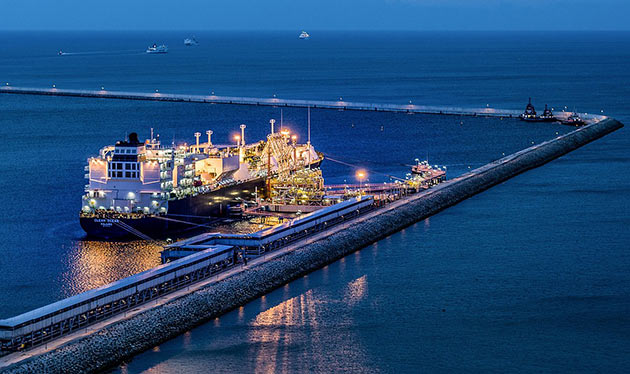Hazard control on tankers involves identifying, assessing and implementing measures to reduce risks and ensure the safety of crew, the environment and cargo. Hazard control measures on tankers include regular safety inspections, equipment maintenance, use of personal protective equipment, implementation of safety procedures and protocols, conduct of safety drills and drills, monitoring of cargo operations and compliance with regulatory requirements. Effective hazard control is essential to prevent accidents, spills and other incidents on tankers.
Cargo/Material Safety Data Sheets
- Information about cargoes to be handled is essential to the safety of vessel and her crew.
- Such information maybe found on ICS or other cargo data sheets for each product, which also include all necessary data for the safe handling and carriage of the cargo.
- Cargo information for most tanker cargoes is kept on board and available for all concerned.
- Cargo will not be loaded unless sufficient information necessary for its safe handling and transportation is available.
- The responsible officer will see to it that the necessary cargo information is posted on the notice board prior to cargo operations.
- All personnel engaged in cargo operations should familiarize themselves with the cargoes by studying the ICS or other Cargo Data Sheets.
- Cargo information is fundamental in cargo planning.
Material Safety Data Sheets
In addition plentiful notes are included governing tankcleaning hazards, protective clothing needed, cargo compatibility etc. for certain dangerous cargoes. This guide should be consulted as a definite source for anyone requiring detailed information about full range of cargoes.
Material Safety Data Sheets
- Contains physical and chemical properties of chemical cargoes.
- For each cargo the following data are given:
- Appearance and odour.
- The main hazards.
- Emergency procedures, to be adhered to when the following occur:
- Fire.
- Liquid in eye.
- Liquid in skin.
- Vapor inhaled.
- Spillage.
- Fire and explosion data.
- Chemical data.
- Reactivity data.
- Health data.
- Effect of liquid.
- Effect of vapor.
- Physical data.
- Handling and storage requirements.
- Handling and storage material.
Phenol
- Un nummer – 2 312.
- Mfag table number – 710.
- Marine pollution category – 8.
- Аppearance – Liquid or white crystalline soud.
- Odour – Sharp, like disinfectant.
- Synonyms – benzophenol carbolic acid hydroxybenzane monohydroxybenzene phenylic acid.
THE MAIN HAZARDS – Liquid or aqueous solution causes very rapid severe poisoning which can be fatal by skin contact. Causes severe damage to eyes and skin.
| Emergency Procedures | |
|---|---|
| Fire | Use alcohol-resistant foam. Fire fighters should wear breathing apparatus and protective clothing. Keep adjacent tanks cool with water spray. |
| Liquid in eye | DO NOT DELAY: Wash eye gently, keeping eyelids wide open, with copious amounts of clean water for at least 10 minutes. If there is doubt that the chemical has not been completely removed, continue washing for a further 10 minutes. Consult the MFAG or notional equivalent. OBTAIN MEDICAL ADVICE IMMEDIATELY. |
| Liquid on skin | DO NOT DELAY. HIGHLY TOXIC BY SKIN ABSORPTION. Immediately rip off all contaminated clothing. Rub all contaminated skin with swabs soaked in glycerol polyethylene glycol (PEG), or a 70-30 PEG/methylated spirit mixture for at least 10 minutes. Use large quantities of solvent and change swabs frequently. IMPORTANT: See note 2 overleaf. Alternatively deluge with water from shower or hose whilst rubbing as above. OBTAIN MEDICAL ADVICE IMMEDIATELY. |
| Vapour inhaled | With rescuers wearing breathing apparatus, remove casualty to fresh air. Check that casualty is breathing – if stopped give artificial respiration at once. Give cardiac compression if the pulse is absent. Consult the MFAG or national equivalent. OBTAIN MEDICAL ADVICE IMMEDIATELY. |
| Spillage | Avoid contact with the liquid. Wear full protective clothing and goggles. Wash spill away with water, but not wash overside if in confined waters. In latter case, allow to solidify before removal. Inform Port Authorities if a significant spillage occurs. |
| Health Data | |||
|---|---|---|---|
| TLV | 5 ppm (skin). See note 3 overleaf | Odour Threshold | 0,05 ppm |
| Effect of Liquid | |||
| On eyes | Strongly corrosive. Gangrene may follow. | ||
| On skin | Turns skin white and soft; no immediate pain. Pain intense later than lessens. Gangrene may follow. | ||
| On skin absorption | Headache, abnormal vision, hearing, breathing and heart beat. Skin turns blue, unconsciousness and death may follow. | ||
| By ingestion | As for skin absorption, but also neusea, vomiting, severe stomach pain, corrosion of lips, throat and stomach. | ||
| Effect of Vapour (See note 4) | |||
| On eyes | Irritation. Prolonged exposure may cause burns. | ||
| On skin | Irritation. Dermatitis may follow repeated exposure. Prolonged exposure may cause burns. | ||
| When inhaled (acute-effect) | No significant effects, unless a lot of vapour is inhaled, which is unlikely because the vapour pressure is low. The symptoms are as for “skin absorption” with nauseas and vomiting in addition. | ||
| When inhaled (chronic-effect) | Exposure to high concentrations may cause digestive and nervous disorders, pulmonary oedems or liver and kidney damage. | ||
Phenol – Cargo Data Sheet (ICS) for Phenol
| Fire and explosion data | |||
|---|---|---|---|
| Flash point | 79 °C closed cup | Flammable limits | 1,5 %-10 % |
| Auto-ignition temperature | 605 °C | Explosion hazard | Slight |
| Chemical data | |||
|---|---|---|---|
| Formula | C6H5OH | Chemical family | Phenol |
| Additional information | Is hydroscopic. A weak acid, which is very stable, although it may form tarry deposits and become discoloured. | ||
| Reactivity with | |||
| Oxidising agents | It reacts readily with strong agents. | ||
| Acids | Dangerous reaction with concentrated nitric acid and fuming sulphuric acid. No dangerous reaction with other acids. | ||
| Alkalis | Reacts with moderate evolution of hest. | ||
| Salt or fresh water | No dangerous reaction. | ||
| Air | No dangerous reaction. Some pink or brown discolouration. | ||
| Other chemicals | Reacts dangerously with ethylene oxide, acetaldehyde and formaldehyde (in the presence of acid or alkalid). Otherwise no dangerous reactions but for confirmatory information, consult the data sheet for the other cargo in question. | ||
| Physical Data | |||||
|---|---|---|---|---|---|
| Specific gravity | 1,07 @ 20 °C | Boiling point | 182 °C | Freezing point | 41 °C (See note 5) |
| Vapour pressure | Very low | Vapour density | 3,24 | Viscosity | 4 mPs. s. @ 45 °C |
| Solubility in water | Partly. See note 6 below | Coefficient of cubic expansion | 0,0011 per °C @ 20 °C | Electrostatic generation | Possible |
| Handling and storage recommendations (see note 7) | |||
|---|---|---|---|
| Normal carriage temperature | 45 °C-65 °C | Normal carriage pressure | Ambient |
| Unsuitable materials | Suitable materials | ||
| Zinc Copper Bronze Magnesium Lead Nylon Many paints Some plastics | Stainless steel Nickel Coated mild steel Mild steel Butyl rubber Polyethylene Polypropylene PTFE | ||
Notes:
- The information on this dats sheet is for 100 % phenol, but it may be shipped as 80 % to 90 % squeous solutions, or in solution with cresois.
- Where, for any reason, the solvents recommended are not immediately available, rub the skin with swabs soaked in water. This treatment should be the folowed, as soon as possible, by rubbing With swabs soaked in one of the recommended solvents.
- The designation «skin» refers to the potential contribution to the over-all exposure by the cutaneous route inciudi mucous mambrines end eye, either by sir-borne of, more particularly, by direct contact with the substance.
- Those affected with liver or kidney diseases should not be exposed to phenol for any length of time; even intermittent exposure to the vapours may become dangerous.
- The vapour may condense and solidify causing blockage of flame screens and pressure vacuum valves. There have been no reports of this in practice. It should also be noted that water depresses the freezing point.
- Phenol is partly miscible in water at ambient temperatures. At 20 °C the phanol-rich layer contains about 72 % and the squeous layer about 8 % of phenol. it is completely miscible at temperatures greater than shout 66 °C.
- For at handling operations, gloves, boots and suits of rubber or PVC end head and face protection should be worn.

Methods of controlling hazards on tanker
Inerting
- The introduction of inert gas into a tank with the object of attaining the inert condition.
- By filling the cargo tank and associated piping systems and the spaces surrounding the cargo tank, with gas or vapour which will not support combustion and which will not react with the cargo, and maintaining that condition.
Padding
- Filling and maintaining the cargo tank and associated piping system with a liquid, gas (inert gas) or vapour (liquefied gas), which separates the cargo from air.
Drying
- Filling the cargo tanks and associated piping systems with moisture free gas or vapour with a dew point of -40 °C or below at atmospheric pressure, and maintaining that condition.
- To removed moisture from the tanks that may form hydrates in liquefied gas.
- Dry Nitrogen, Dry air (oxygen).
Monitorin
- To monitor cargo and associated systems by means of taking its Temperature, Ullage, Pressure, & for the irregularities around the tanks.
Read also: Properties of liquefied gases
Anti-static measure
- The electricity produced on dissimilar materials through physical contact and separation Bonding, Grounding & earthing.
Ventilation
- Forced or natural.
- Rapid dilution by air to disperse harmful or flammable cargo vapours vented to the atmosphere is essential to safety. The most critical problem is that of dispersing the high concentrations of vapour, that are vented during the final stages of loading or during gas-freeing operations involving flammable or harmful cargoes.
Segregation
Segregating to avoid contamination & for cargoes that are reactive with each other.
Cargo inhibition
Inhibitor – General term for compound or materials that have the effect of slowing down or stopping undesired chemical changes such as corrosion, oxidation or polymerization.
Certain hydrocarbon compound has a tendency to polymerize with time, accelerated by heat, light, sometimes air or other.
Catalyst – a substance that starts a reaction or changes its speed without being itself chemically changes.
Importance of compatibility of materials
Construction material used for the containment of cargo
- Chemical Tankers – stainless, zinc coated, phenol coated & epoxy coated tanks.
- Liquefied gas tankers – Nickel alloy.
Explosion and Fire on Deck
A vessel was loading propane in still weather at a sheltered jetty. The final tank was being completed but due to failure by the officer concerned the tank was allowed to overfill, the safety valve lifted and liquid started to erupt from the vent stack. The liquid and vapour escaping from the vent stack rolled down the shipside and was ignited by an internal combustion engine running on a craft moored alongside.
There has been more than one incident of this nature recorded where escaping vapour has been drawn into the air inlet of a petrol or diesel engine resulting in the engine over speeding due to the governor which, shuts down-and the fuel supply under normal circumstances having no control over the gas air mixture being drawn in via the air manifold of the engine.
The engine in these circumstances increased speed and finally disintegrated. The vapour in the surrounding atmosphere was ignited and flashed back to the outlet of the vent stack which was, fitted with a flame screen. A fire at the top of the vent stack was being fed with vapour or possibly liquid droplets due to over pressure in the cargo tank.

